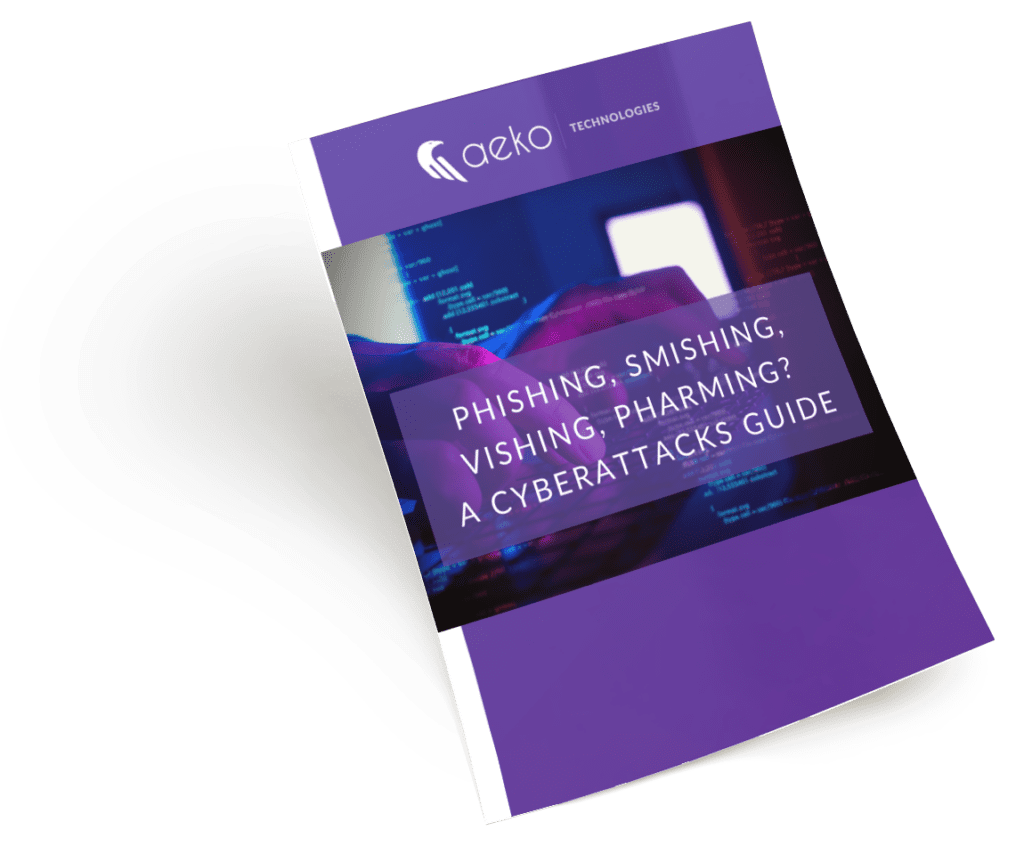If you’ve been around the internet before, you’ve likely heard of cyberattacks and the damage that they cause. But what’s the difference between phishing vs smishing vs whaling? As anyone working in today’s fast-paced digital world, you should be making your cyber security a top priority.
In this article, we explore the most common types of cyber attacks and how to defend against them.
Phishing
Let’s start with the most common form of cyber attack: phishing. Did you know a new phishing website is created every 20 seconds, or that on average 3.4 billion malicious emails are sent every day?
Phishing emails often appear genuine, mimicking reputable companies like PayPal or Amazon. However, they are deceptive and pose a serious threat to your data.
Phishing emails tend to convey a sense of urgency, compelling recipients to act hastily. The language and tone mimic that of legitimate businesses, often including personal details to lure the target into opening the email.
Regrettably, if recipients take the bait, their system becomes infected with malware. If you’ve been a victim of phishing, check out our disaster recovery solutions.
Smishing
Smishing is a cybercriminal method similar to phishing but delivered through text messages. The term “smishing” derives from “SMS,” meaning text message.
Just like phishing, the goal is to convince you to click on a deceptive link within the text, leading you to a seemingly authentic login screen where your username and password may be captured. Detecting smishing can be trickier compared to emails, as text messages usually lack detailed information.
Cybercriminals may make it appear as if the message is from your bank or a familiar source, but in reality, it’s not. They might even claim you’ve won something enticing, but be cautious; all you’ll receive is trouble and make yourself vulnerable.
Remember, legitimate banks, insurance companies, the IRS or vendors will not send you such text messages. If you receive any suspicious texts, refrain from clicking on any links.
Instead, access your account through the usual website or app to check for messages securely.
Whaling
While phishing targets may be lower-level employees, whaling focuses on senior-level employees within a company. A “whale” refers to individuals holding influential positions like CEOs, presidents or other high-ranking roles.
Unlike general employees, who only have access to files relevant to their work, a CEO can typically access all files, including sensitive data such as banking and HR information; making them a prime target for cybercriminals.
Whaling involves cyberattacks specifically aimed at one or more senior-level employees, employing various tactics like phishing, smishing, vishing and pharming. Hackers may exploit their position of authority to deceive or manipulate these individuals into revealing critical information.
3 Cyber Attack Methods and 3 Data Security Tips
Now that you know about phishing vs smishing vs whaling, here’s a recap of what you’ve just learned:
- Phishing relies on deceptive emails.
- Smishing leverages text messages to deceive victims.
- Whaling specifically targets high-ranking officials, such as CEOs or presidents.
But how can you protect your data? Here are some expert tips from our managed IT service professionals:
- Avoid hasty responses. Take a moment to assess any incoming emails. Hover over the sender’s name and links to ensure they match the “from” email address you’d expect from the sender. Verify that it genuinely comes from the URL you recognize, with the full email address you’re accustomed to. For instance, look for a “from” address like joe@yourbankswebsiteaddress, not from joe@gmail.com.
- Implement multi-factor authentication (MFA). Set up an MFA, such as those offered by Microsoft, Google or Last Pass. This extra layer of security strengthens your protection against unauthorized access.
- Exercise caution with downloads. Refrain from clicking on downloads from sites like Dropbox or Google directly from the email. Instead, visit the site using your regular method and verify the legitimacy of the download. Hovering over the link and reading it can often help identify if it is legitimate.
Phishing vs Smishing vs Whaling: Check Out Our Free Cyberattacks Guide
Want to learn more about other cyberattacks and more pro tips on data security? We’ve got you covered.
In our free Phishing, Smishing, Vishing, Pharming? A Cyberattacks Guide, we’ll cover phishing vs smishing vs whaling in more detail, two other cyberattack methods (vishing and pharming), and more data security tips.
Get The Guide
Use this resource with your internal IT team or managed service provider to determine where you need to start improving your cybersecurity awareness. And, if you have any other burning questions about IT, contact us or book a meeting, virtually or in person. We’re happy to help.
Are you aware of the most common cyberattack methods?
Did you know there are over 3.4 billion phishing emails sent every day? Phishing and other cybercriminal behavior are a lot more common than you’d think.
Our free “Phishing, Smishing, Vishing, Pharming? A Cyberattacks Guide” will inform you about cyberattack methods and give you the latest in data security tips.


